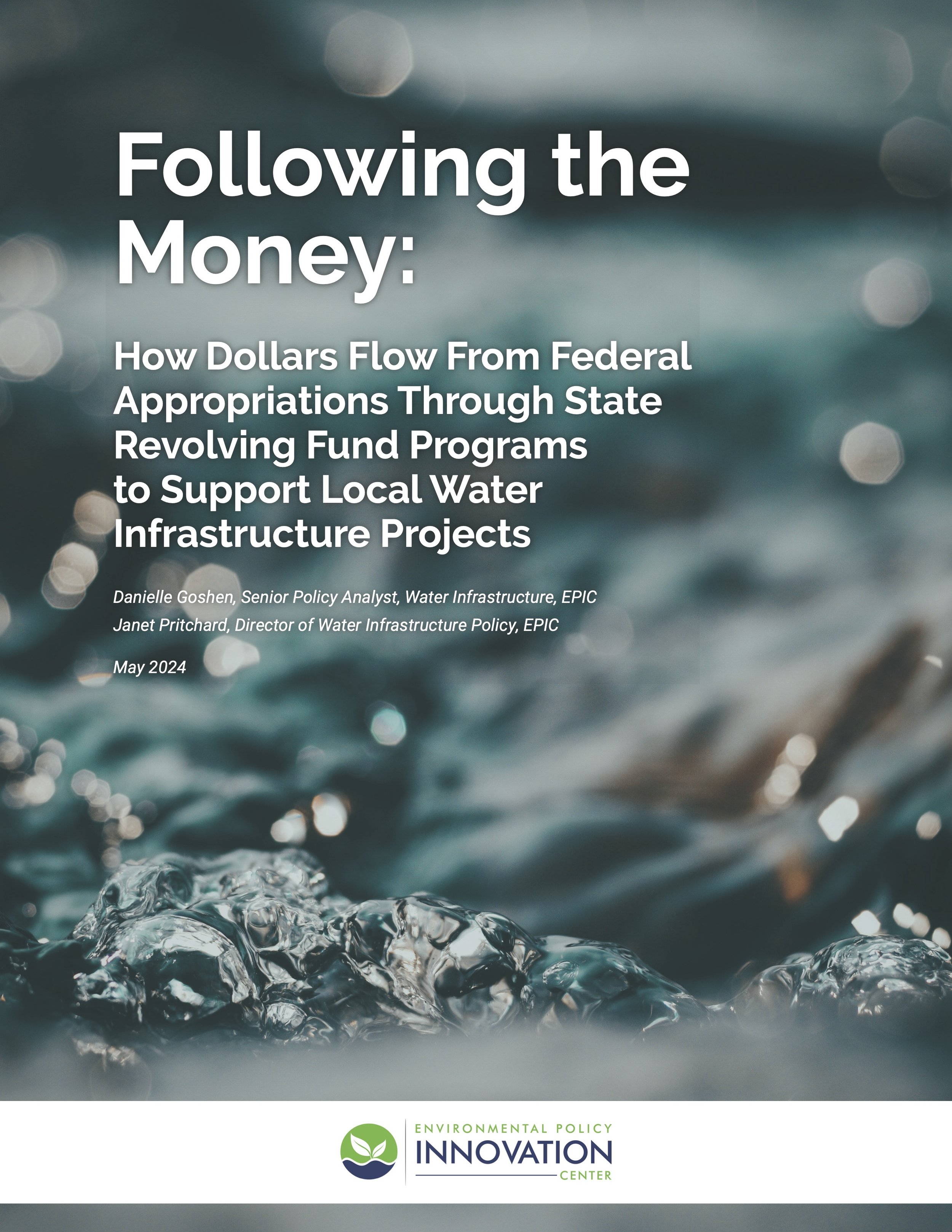SRF Policy Briefs and Explainers
The Environmental Policy Innovation Center is developing a series of briefs on policy options that State Revolving Fund (SRF) programs could adopt to expand access to state and federal investments in water infrastructure while ensuring the long-term viability of the SRFs and their ability to provide continued access to low-cost capital for water projects. The policy options relate to a variety of important issues, from reforming state definitions and policies to ensure additional subsidies reach the communities that need them most, to consideration of financial terms and fees and their impacts on affordability. These policy options will be useful to state and federal policymakers, municipalities and utilities, nonprofits, advocates, and other stakeholders. All policy briefs will be available here. Please check the website regularly for updates, and sign up for the EPIC newsletter to receive notifications when a policy option brief is released.
State SRF Policies: Dispatches From Our Water Webinar Series
Check out our blog for recordings and additional insights on the following topics:
Optimizing Interest Rates and Other SRF Loan Policy Strategies
How States Can Define Disadvantaged Communities to Expand Access to SRFs for Small and Under-Resourced Communities
Policy Decisions Impacting how Principal Forgiveness is Distributed to SRF Applicants
For more information on these topics, please contact:
Janet Pritchard
Director of Water Infrastructure Policy
Danielle Goshen
Senior Policy Analyst, Water Infrastructure
Explore Our SRF Policy Briefs and Explainers
Optimizing Interest Rate and Other Loan Policies for SRF Financing
-
This brief explores policy options, analyzes trends across the states, and highlights policies and practices that states should consider when determining interest rate and other loan policies. Key recommendations include:
Interest Rate Policies
Loan Term Policies
Loan Fee Policies
How States’ Disadvantaged Community Definitions Can Prioritize Access to SRFs for Under-Resourced Communities
-
This brief, through a detailed analysis of the diverse approaches taken by the 50 states, reveals varied methodologies, with no one-size-fits-all solution. However, through this analysis, several key recommendations stand out. To ensure effective allocation of resources, the following state policies around defining DACs are recommended:
Determining the Factors Used to Define DAC Eligibility
Structuring the DAC Definition to Enable Balanced Consideration of Multiple Factors and Ranking of DACs on the Basis of Relative Need
Determining the Geographic Scope Used to Apply DAC Factors and Thresholds
State Policies Impacting SRF Assistance to State-Defined Disadvantaged Communities
-
While there is no universal solution, several best practices and recommendations emerge from this analysis to guide states in maximizing the impact of SRF funding:
Allocating Base Funding as Principal Forgiveness for state-defined DACs
Caps on Principal Forgiveness
Project Prioritization Points for state-defined DACs
Interest Rate Discounts and Extended Loan Terms for state-defined DACs
Following the Money: How Dollars Flow From Federal Appropriations Through State Revolving Fund Programs to Support Local Water Infrastructure Projects
-
Understanding the intricate flow of funding for water infrastructure projects from White House executive budget requests to communities can be daunting. Yet comprehending these processes is critical for grasping how water infrastructure projects come to life. On the path to state SRF agencies finalizing award agreements with communities, there are dozens of steps, often consisting of timeline windows of months or even years during which each step can take place; while at the same time there are also some hard deadlines that states and communities must adhere to.
EPIC’s Following the Money explainer aims to demystify how SRF funds move from Congressional appropriations through state SRF programs to fund local water infrastructure projects, outlined in 19 steps over four stages. We also explain key concepts involved in the process.
How State Revolving Fund Policies Can Support Water Workforce Development
-
IIJA is an investment in jobs, as well as infrastructure. Federal SRF appropriations flow to communities through state SRF programs, but more is needed to ensure that the workers in under-resourced communities benefit from jobs created by these investments.
This policy brief identifies policy options state SRF administrators can adopt to advance workforce development goals.








